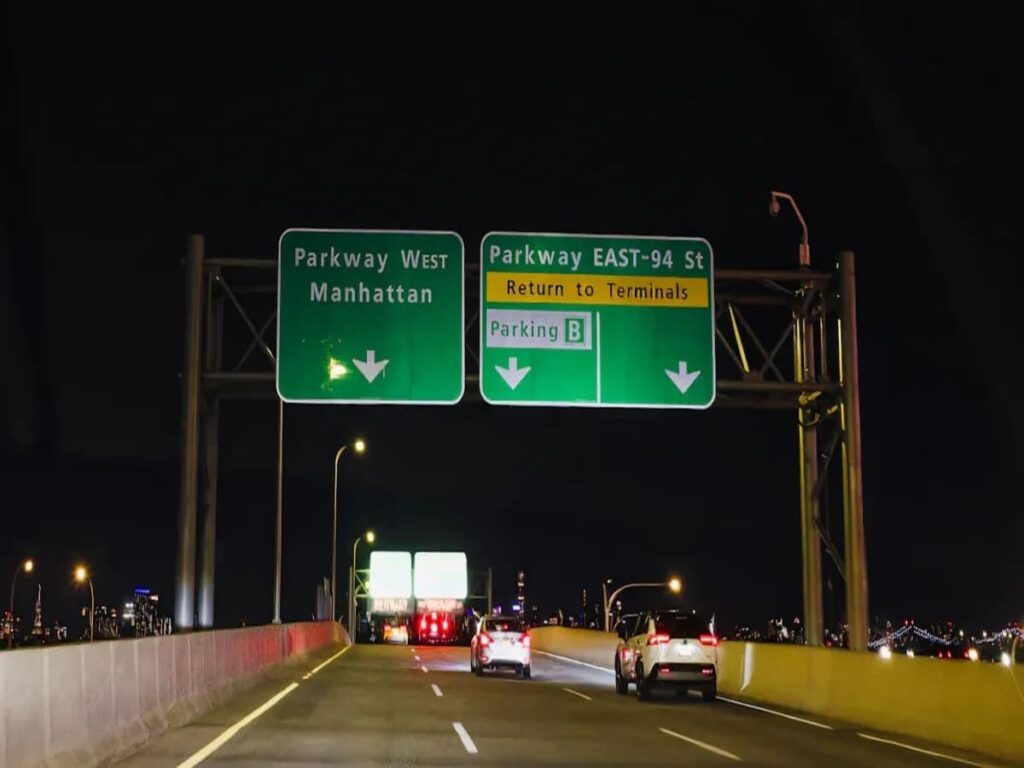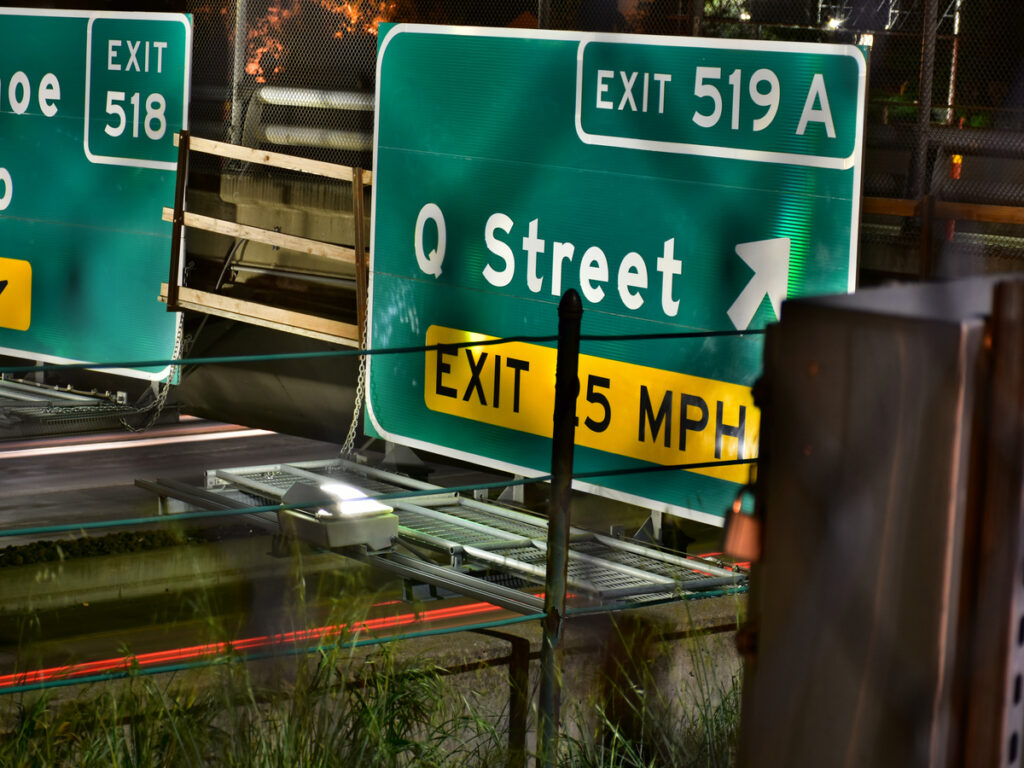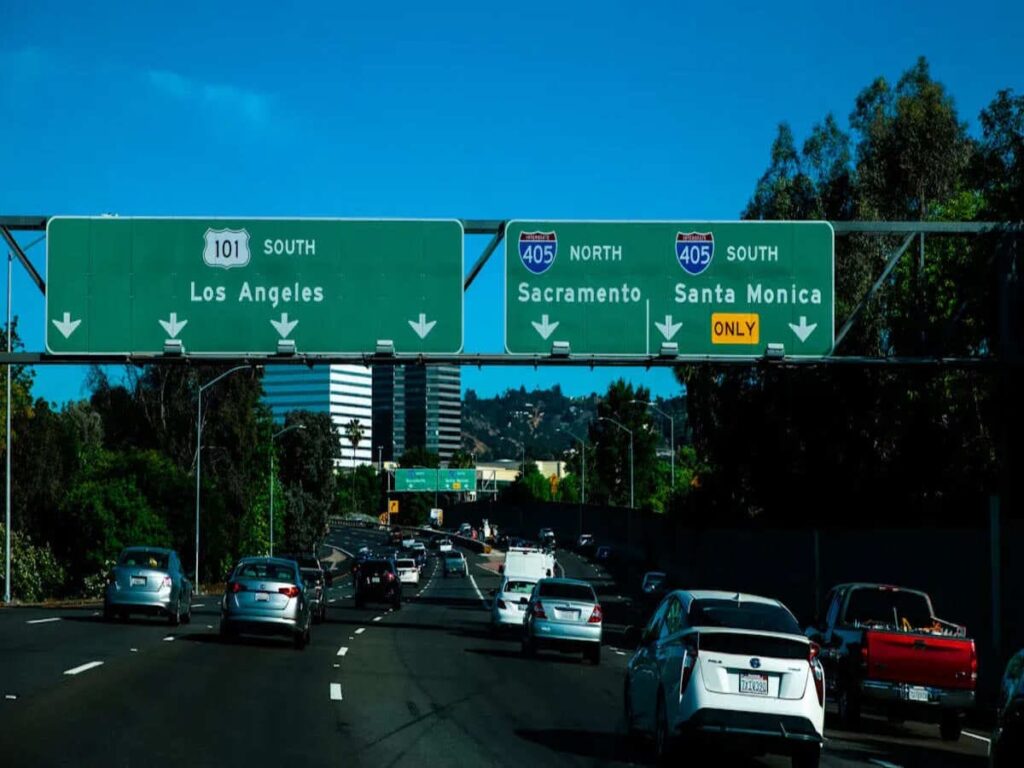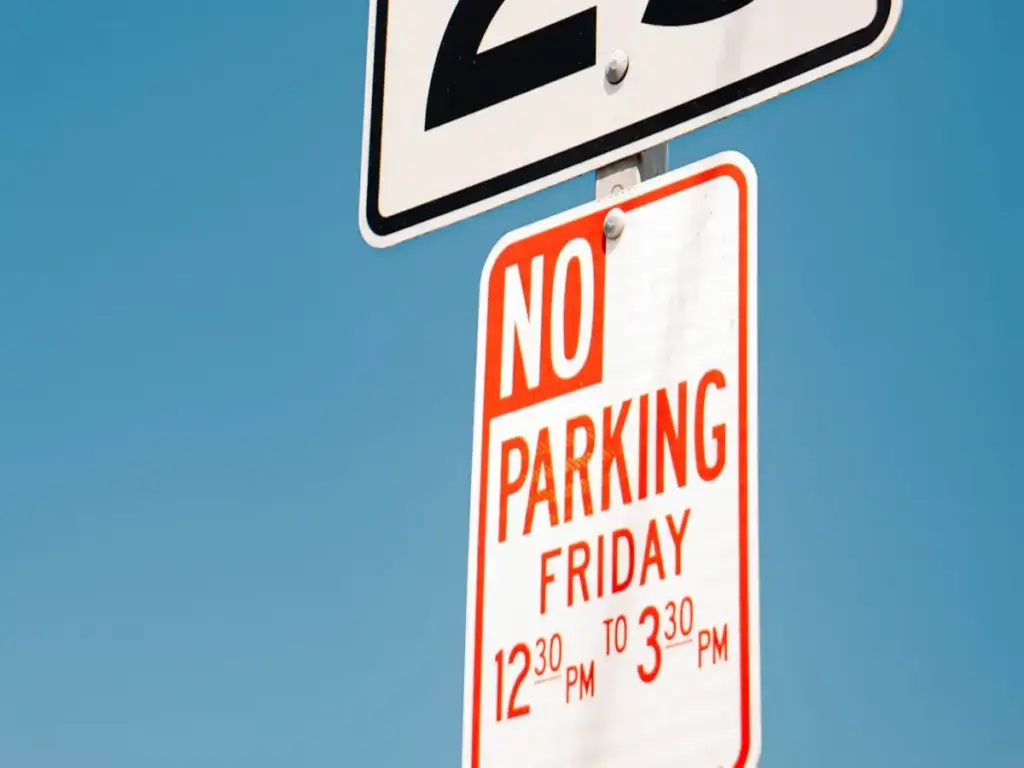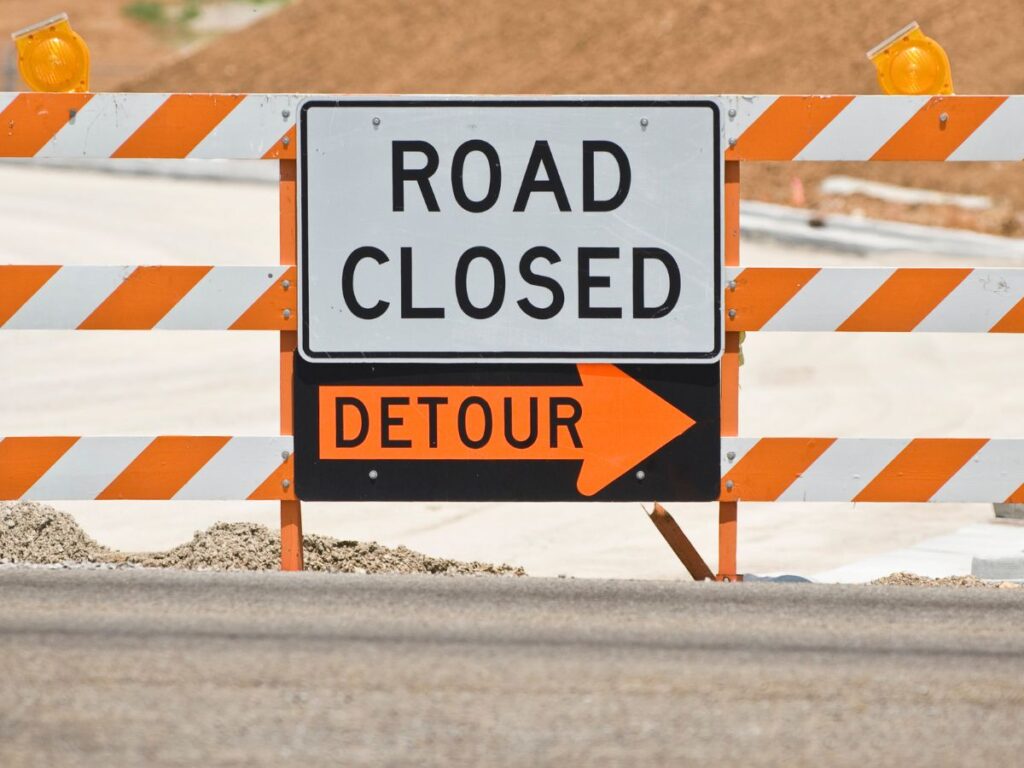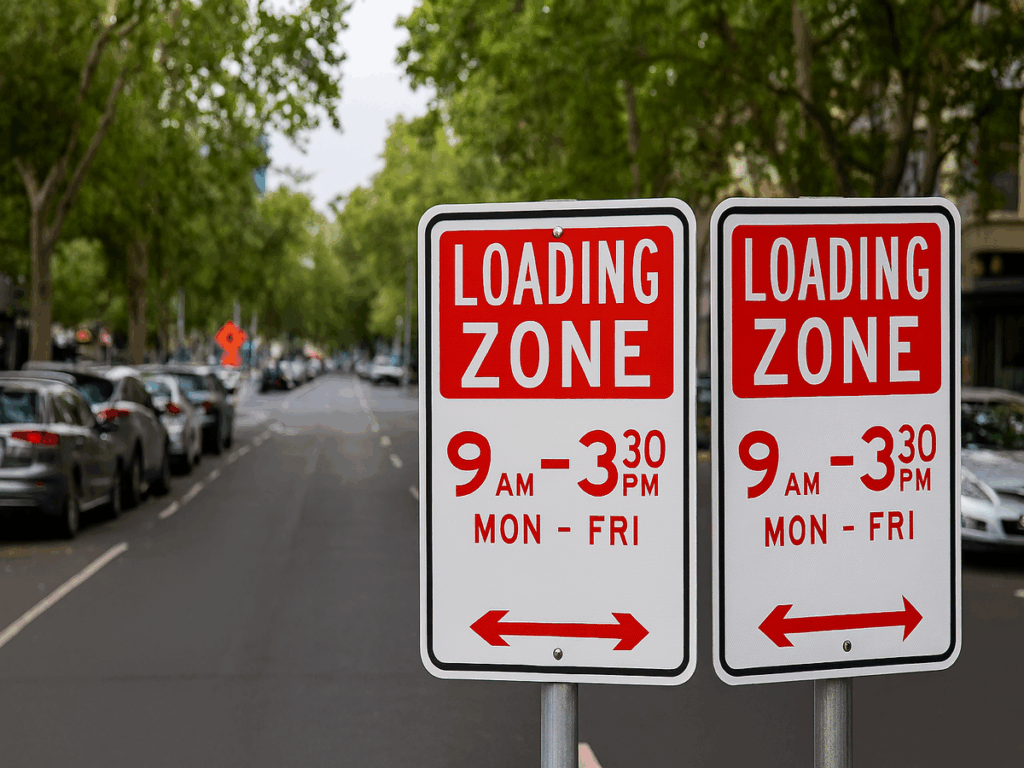
Australian roads have many parking signs to guide drivers. Loading zone signs allow some vehicles to load or unload goods. This is usually allowed for up to 30 minutes. No stopping signs mean drivers cannot stop their cars at all. The only time you can stop is for a medical emergency. Clearways have broken yellow lines on the road. These stop people from parking during busy times. Drivers need to know the no parking rules in each place. If you break these rules, you might get a fine or your car towed.
Learn more about how these Australian traffic signs are designed and regulated in our blog: Understanding AS 1742: The Foundation of Australian Traffic Sign Regulations.
Key Takeaways
- Loading zones let some vehicles stop for a short time. They can load or unload goods for up to 30 minutes. Private cars cannot use these zones for shopping or waiting.
- No stopping signs mean no vehicle can stop at any time. You cannot even stop for a second unless it is an emergency. These rules are strict to keep roads safe.
- Clearways do not let you stop during busy times. This helps traffic move better. Only buses and taxis can stop for a short time. They can pick up or drop off people during these hours.
- Always read parking signs carefully to know the rules. Check the allowed times and which vehicles can park. This helps you avoid fines or towing.
- If signs overlap, follow the strictest rule to stay safe. If you are not sure, find another place to park.
Loading Zone Sign
What They Mean
Loading zone signs show where vehicles can stop to load or unload goods. These traffic signs help keep traffic moving and make sure businesses can receive deliveries. Some loading zone signs show set hours, such as “8AM–6PM MON–FRI”. Others apply all day and night. The sign will always show the rules clearly. Drivers must check the sign for the exact times and conditions.
Who Can Use Them
Not every vehicle can use a loading zone. Only certain vehicles may stop in these areas. The rules depend on the type of vehicle and what it is doing. The table below shows who can use a loading zone and for how long:
| Vehicle Type | Allowed to Stop in Loading Zone? | Maximum Time Allowed | Conditions / Notes |
|---|---|---|---|
| Vehicles built mainly for carrying goods | Yes | Up to 30 minutes | Must be loading or unloading goods |
| Station wagons or three-wheeled goods vehicles | Yes | Up to 15 minutes | Must be built mainly for carrying goods |
| Other private vehicles (e.g., 4WD, passenger) | No (except brief stops) | Brief stops only | Only allowed to pick up or set down passengers |
A private car cannot use a loading zone for shopping or waiting. Only vehicles that carry goods or provide services, such as couriers, taxis, or delivery vans, can use these spaces. The law defines what counts as a goods vehicle.
Time Limits
Loading zone signs always show the time limits. Most vehicles can stop for up to 30 minutes. Some vehicles, like station wagons, have a shorter limit of 15 minutes. If the sign shows certain hours, the rules only apply during those times. Outside those hours, anyone may park unless another sign says otherwise.
Tip: Always check the sign for time limits and vehicle types before stopping in a loading zone.
Typical Locations
Councils place loading zone signs in busy areas. These include shopping streets, near warehouses, and close to business entrances. The signs follow Australian standards, with clear wording and arrows to show where the rules apply. Drivers will often see loading zones near shops, offices, and delivery docks.
No Stopping Signs
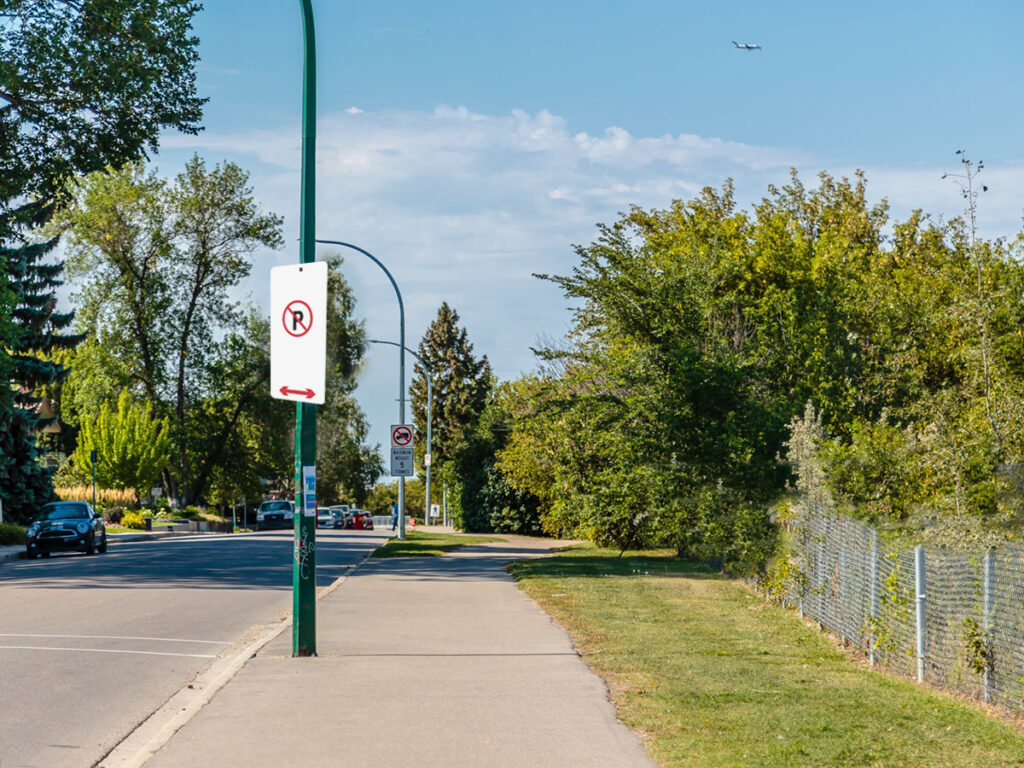
Sign Meaning
No stopping signs show the strictest rule for drivers. These signs mean a driver cannot stop their vehicle at any time, not even for a few seconds. The only exception is for emergencies, such as avoiding a crash or helping someone who is hurt. The rule applies to all vehicles, including taxis and delivery vans. The sign uses a red cross on a white background, making it easy to spot. Some roads also have a yellow line painted along the kerb to show the same rule.
Note: Stopping to drop off or pick up passengers is not allowed in these areas.
Where They Apply
Councils place no stopping signs in places where stopping would block traffic or put people at risk. These signs help keep roads safe and clear for everyone. Drivers will often see them in the following locations:
- Near intersections and traffic lights
- At pedestrian crossings and school zones
- Across curb cuts and near traffic islands
- Around sharp curves and on narrow road sections
- In busy urban areas with lots of cars and people
Some cities, like Brisbane, use these signs more often than others. In Melbourne, they appear less frequently but still mark important spots, such as near train stations or shared paths.
Enforcement
Authorities enforce no stopping signs very strictly. Parking officers and police check these areas often. If a driver stops in a no stopping zone, even for a moment, they can receive a fine. In some cases, the vehicle may be towed away. The rules leave no room for excuses, so drivers must always look for these signs and follow them.
Clearway Rules
What Is a Clearway
A clearway is a special road area in Australia where stopping is not allowed during certain times. Only taxis and buses may stop at the kerb when the clearway is active. Other vehicles must keep moving unless there is an emergency. Councils use clearways on busy roads to help traffic flow better. When a clearway operates, the lane next to the kerb becomes an extra lane for moving vehicles. This helps reduce congestion, especially during peak hours.
Clearways are marked with a yellow broken circle on signs. The sign will also show the days and times when the clearway is in force.
When It Applies
Clearways do not operate all day. They usually apply during busy times, such as morning and evening rush hours. For example, a sign might say “CLEARWAY 7AM–9AM MON–FRI”. Outside these hours, drivers may park or stop if no other restrictions apply. In some cities, like Perth, parking meters do not accept payment during clearway times. Drivers must always check the sign for the exact times.
Who Can Stop
During clearway hours, only taxis and buses can stop at the kerb. They may stop briefly to pick up or set down passengers. All other vehicles must not stop, even for a short time. The rule helps keep the lane clear for moving traffic. If a driver stops in a clearway without a valid reason, they risk a fine or having their vehicle towed.
| Vehicle Type | Can Stop in Clearway? | Notes |
|---|---|---|
| Bus | Yes | Only to pick up or drop off passengers |
| Taxi | Yes | Only to pick up or drop off passengers |
| Private Car | No | Not allowed during clearway hours |
| Emergency | Yes | Only in emergencies |
Enforcement and Towing
Authorities enforce clearway rules strictly. Parking officers and police check these areas often during clearway times. If a vehicle stops in a clearway when it should not, it may be towed away quickly. Owners must pay a recovery fee, which is often around $100. Councils use towing to keep clearways free and traffic moving. Drivers should always read the signs and move their vehicles before clearway times begin.
Comparison
Key Differences
Drivers see lots of parking signs on roads in Australia. Each sign has its own rules. The table below shows how loading zone signs, no stopping, and clearway rules are different:
| Feature | Loading Zone Signs | No Stopping Areas | Clearways |
|---|---|---|---|
| Who Can Stop | Goods vehicles, couriers, taxis (for loading only) | No one (except in emergencies) | Buses and taxis (briefly for passengers) |
| When | Only during signed hours or 24/7 if not specified | Never, unless emergency | Only outside clearway hours |
| How Long | Up to 30 minutes (15 for some vehicles) | Not allowed at any time | Not allowed during clearway times |
| Sign Appearance | White with black text, time limits shown | Red cross, white background, yellow line | Yellow broken circle, times shown |
- Loading zone signs let some vehicles stop to load or unload goods. Other cars can stop for a short time to pick up or drop off people.
- No stopping areas have the strictest rule. No car can stop, not even for a second, unless there is a medical emergency.
- Clearways work like no stopping zones at certain times. Only buses and taxis can stop for a moment to let people get in or out.
Note: Many drivers mix up no parking and no stopping rules. No stopping means you cannot stop at all. No parking sometimes lets you stop for passengers.
Penalties
Councils in Australia check parking signs closely. Breaking no parking rules can cost a lot and cause trouble.
- If you stop in a loading zone without the right vehicle or stay too long, you can get a fine.
- If you stop in a no stopping area, even for a second, you will almost always get a fine. Sometimes your car might be towed away.
- Parking in a clearway when it is active can mean your car is towed right away. You will also have to pay a fee and a fine.
People often make mistakes. Some think they can park in a loading zone if no delivery car is there. Others mix up no parking and no stopping signs. Even a quick stop in the wrong spot can lead to a penalty.
Tip: Councils in places like Melbourne and Sydney watch these areas carefully. This helps keep traffic moving and keeps people safe.
Compliance Tips
Drivers can avoid fines by doing a few easy things:
- Always read the parking signs before you stop.
- Check the time limits and which vehicles can stop there.
- Never stop in a no stopping zone, not even for a quick drop-off.
- Only use loading zones if you have the right vehicle and are loading or unloading goods.
- Move your car before clearway times start so you do not get towed.
- Remember, no parking rules are not the same as no stopping rules. No parking sometimes lets you stop for passengers, but no stopping does not.
🚦 Quick reminder: If you are not sure about a sign, keep driving until you find a spot with clear rules.
If drivers know the differences between loading zone signs, no stopping, and clearway rules, they can follow the rules and not make costly mistakes. Always check the parking signs and know the local rules before you leave your car.
Practical Scenarios
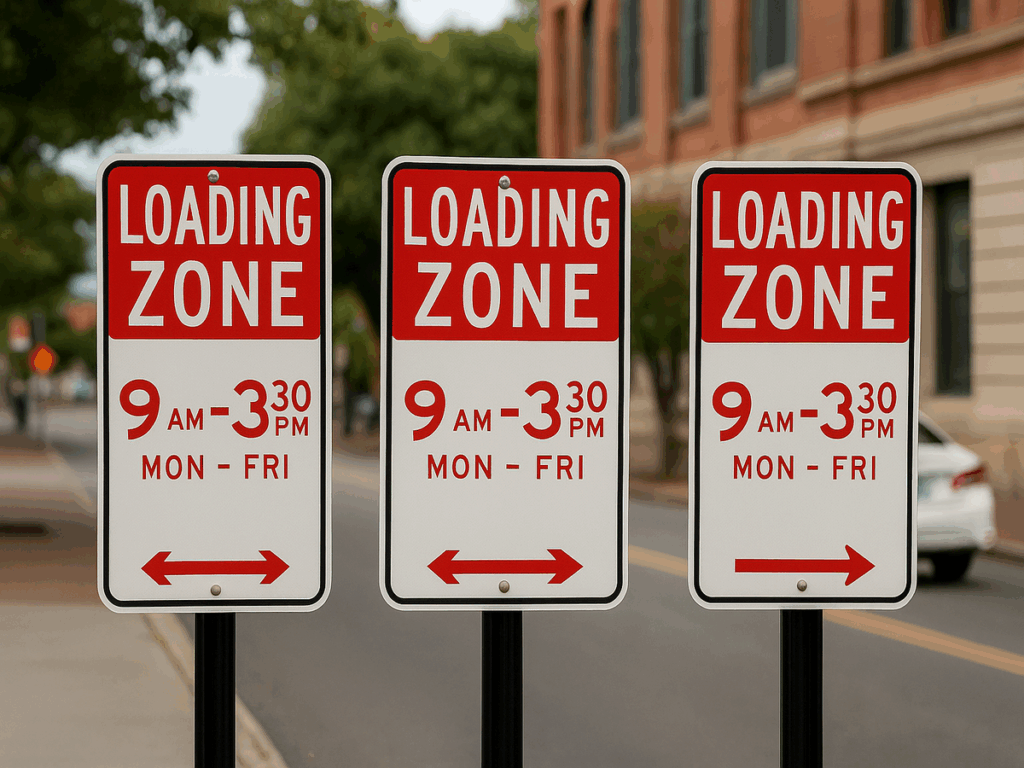
Brief Stops
Many drivers wonder if they can stop for just a moment in restricted areas. In a no stopping zone, even a quick pause is not allowed. A driver cannot stop to let someone out or answer a phone call. The rule is strict. In a clearway, only taxis and buses may stop briefly to pick up or drop off passengers during clearway hours. In a loading zone, private cars may not stop unless they are dropping off or collecting passengers, and only for a very short time.
Tip: Always check the parking signs before stopping. Even a short stop can lead to a fine if the rules do not allow it.
Commercial Vehicles
Commercial vehicles, such as delivery vans and trucks, have special rules. These vehicles can use loading zones to load or unload goods. The driver must move the vehicle once the job is done or when the time limit ends. For example, a courier delivering parcels to a shop may use the loading zone for up to 30 minutes. If the vehicle stays longer, the driver risks a penalty. In no stopping areas and clearways, commercial vehicles must follow the same rules as everyone else. They cannot stop unless they meet the clearway exception for buses or taxis.
Overlapping Signs
Sometimes, drivers see more than one sign in the same place. For example, a loading zone sign may sit next to a clearway sign. In these cases, the most restrictive rule applies during the times shown. If a clearway is active, no one can stop except taxis and buses, even if a loading zone sign is present. Drivers should read all parking signs carefully and follow the strictest rule.
| Scenario | What to Do |
|---|---|
| Loading zone + clearway (same time) | Follow clearway rule—do not stop |
| Loading zone outside clearway time | Loading zone rules apply |
| No stopping + any other sign | No stopping rule always applies |
Note: When in doubt, choose another spot to avoid confusion and possible fines.
Drivers in Australia must follow different rules for loading zones, no stopping areas, and clearways. Each sign means something different and has its own time rules. Reading the signs carefully helps drivers not get fines or confused.
- Loading zones let some vehicles stop to load or unload goods.
- No stopping signs mean no car can stop, not even for a second.
- Clearways keep lanes open when roads are busy, except for buses and taxis.
Always check your local council’s rules, as they can be different in each state.
FAQ
Can a driver stop in a loading zone to wait for someone?
A driver cannot wait in a loading zone. The car must be loading or unloading goods or people. If you just wait without doing this, it is not allowed. Parking officers can give you a fine if you misuse the area.
What happens if a car stops in a clearway during restricted times?
The car might get towed away very fast. The owner will have to pay a fine and a towing fee. Clearways help traffic move, so the rules are strict.
Are motorcycles allowed in loading zones?
Motorcycles can use loading zones if they carry goods and are loading or unloading. They must follow the same time rules as other goods vehicles. Private motorcycles cannot park in loading zones.
How can someone tell if a no stopping sign applies at night?
No stopping signs work all the time unless the sign shows hours. If there are no times on the sign, the rule is always on, day and night.
Do clearway rules apply on public holidays?
| City | Public Holiday Clearway? |
|---|---|
| Sydney | Sometimes |
| Melbourne | Sometimes |
| Brisbane | Sometimes |
Drivers must look at the sign for details. Some clearways work on public holidays, but some do not.

